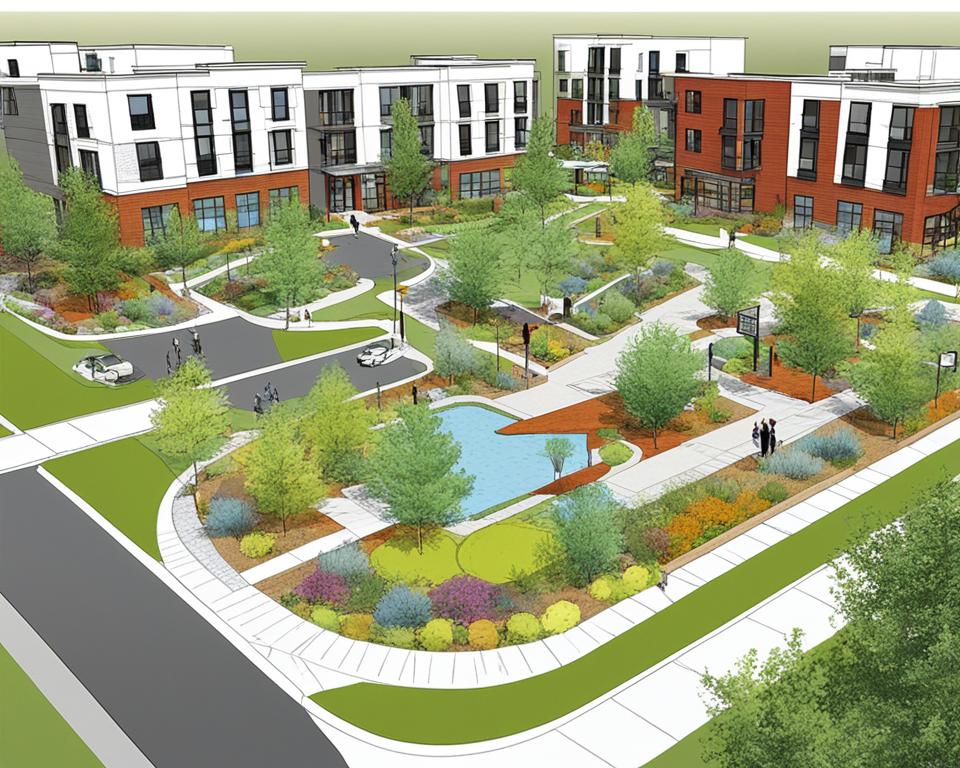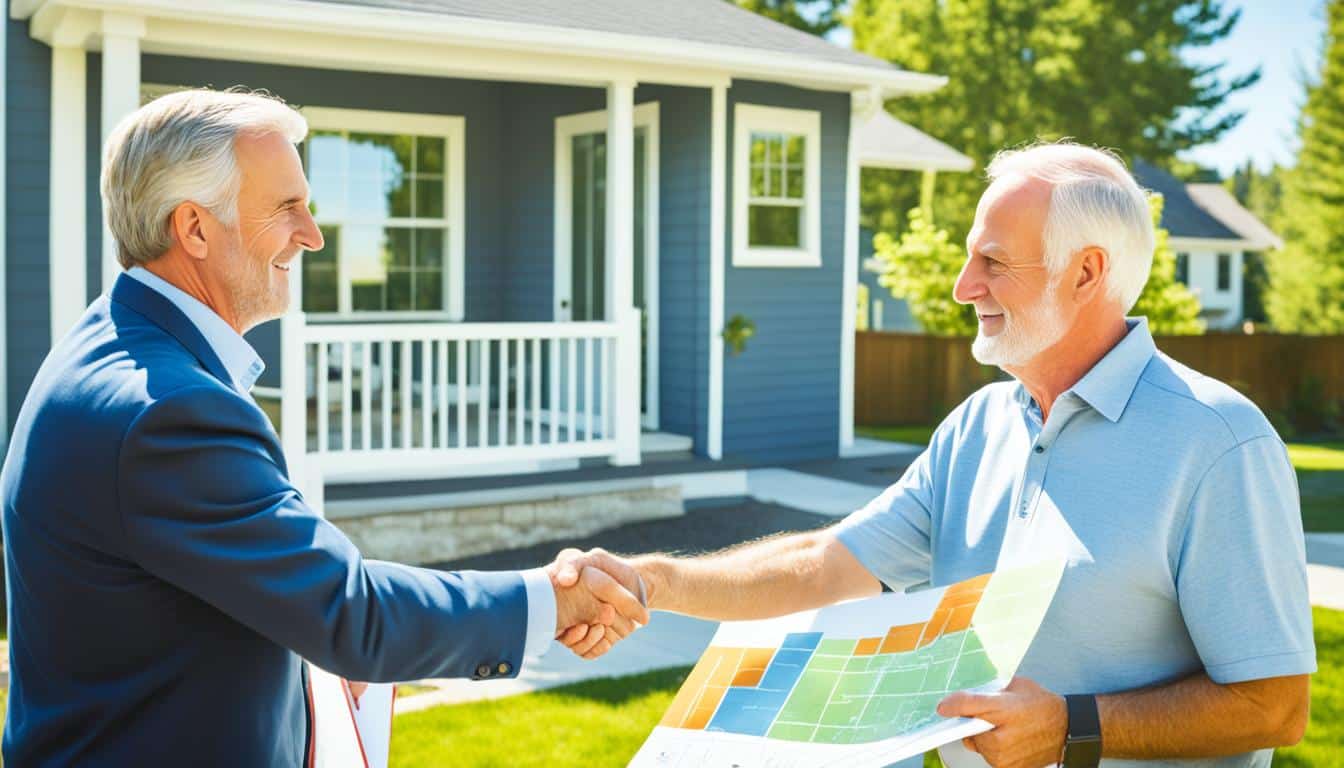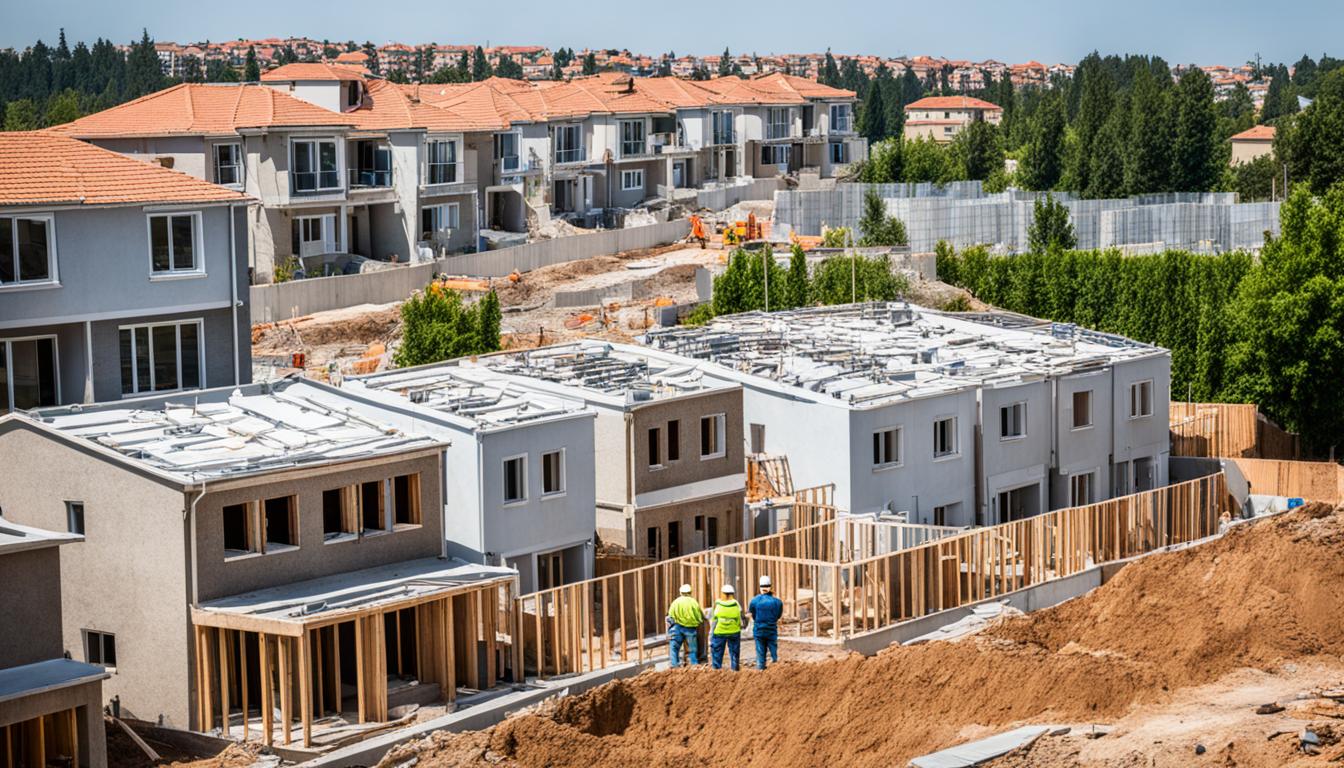Establishing friendships with your neighbors can significantly enhance your living experience. Engaging in community activities and initiating conversations not only helps to build neighborhood relationships but also creates a stronger sense of community. These connections provide both emotional support and practical advantages, making your neighborhood a more enjoyable place to live.
Key Takeaways
- Building neighborhood relationships lead to a more supportive living environment.
- Community engagement fosters emotional and practical benefits.
- Friendly neighbors can enhance your quality of life.
- Participating in local activities strengthens community ties.
- Initiating conversations with neighbors is the first step to lasting friendships.
Why Making Friends with Your Neighbors Matters
Forming friendships with neighbors is more than just being sociable—it’s about cultivating a sense of community that enriches our lives in significant ways. Understanding and appreciating the value of neighborly benefits can lead to stronger, more supportive neighborhoods. Let’s dive into why establishing these connections can make a profound difference.
Sense of Community
A strong sense of community hinges on the connections we build with those around us. It fosters a friendly environment where residents look out for each other, offering emotional and practical community support. For instance, in diverse neighborhoods like Denver, residents from varied backgrounds come together, providing unique perspectives and fostering a spirit of harmony and cooperation. This sense of belonging can enhance overall well-being and make everyday living more enjoyable.
Practical Benefits
The practical benefits of social networking in neighborhoods are immeasurable. Neighbors can help in times of emergency, offer resources, and share valuable information. Whether it’s borrowing a cup of sugar, getting a recommendation for local services, or keeping an eye on each other’s properties, the benefits are plenty. This network of support creates a safety net that is invaluable in both casual and critical situations.
Answer the Doorbell
Answering the doorbell is more than just a polite gesture—it’s the first step towards establishing neighbor interaction. In welcoming neighborhoods, this small act can pave the way for meaningful connections and set positive first impressions.
Whether it’s a quick hello or a longer chat, these initial interactions are crucial. They show that you’re open to conversing, fostering a sense of community. A simple greeting can quickly evolve into deeper conversations, making your neighborhood feel more inclusive and friendly.
Responding to a neighbor’s visit can lead to shared smiles and warm exchanges, contributing to a genuinely welcoming neighborhoods environment. These small moments of neighbor interaction help to create lasting bonds within the community.
When you hear that doorbell, remember it’s an opportunity to create a positive first impression and to embrace the chance to connect with those around you. The benefits of such gestures extend beyond simple courtesy; they are the building blocks of a supportive and interconnected neighborhood.
Go for a Walk
Embarking on regular community walks offers a perfect chance for neighborhood exploration. As you stroll through the local parks and streets, opportunities for meeting neighbors naturally arise. A friendly smile or a simple “hello” can spark a conversation, fostering new connections.
During these walks, it’s easy to discover the unique aspects of your neighborhood that might go unnoticed otherwise. Observing communal areas and frequenting popular spots can reveal the heart of your local community. These encounters often lead to shared interests, making conversations more enriching and enjoyable.
Moreover, engaging in neighborhood exploration enhances your familiarity with your surroundings, making every walk a potential adventure. In essence, community walks not only promote physical well-being but also strengthen the bonds within your neighborhood. With each step, you pave the way toward a more connected and vibrant community.
Let Your Dog Break the Ice

Dogs can be wonderful icebreakers in any neighborhood. When you take your furry friend out for a walk in pet-friendly communities, it’s almost guaranteed that you’ll encounter other dog owners doing the same. These casual encounters often turn into friendly chats, creating an excellent opportunity for building relationships and growing a sense of camaraderie.
Dog walking offers more than just exercise for you and your pet. It gives you a reason to step outside and connect with your neighbors. Conversations about your four-legged friends can easily evolve into friendships. Furthermore, in communities where social pets are common, these interactions can lead to a tight-knit network of dog lovers who support one another in pet care and social activities.
Here is a quick look at how dog walking can foster community connections:
| Benefit | Description |
|---|---|
| Encounters | Running into fellow dog walkers sparks spontaneous conversations. |
| Common Interests | Shared interest in pets naturally bridges gaps between neighbors. |
| Network Building | Creates a support system for pet care and information sharing. |
Next time you step out for a walk in your pet-friendly community, remember that your dog is not just your companion but also a bridge to meeting your neighbors and fostering meaningful connections.
Join Neighborhood Social Media Groups
Embracing online communities through neighborhood apps and social media networking can significantly boost your engagement within your local area. These digital platforms make it easier to stay informed about neighborhood activities and connect with like-minded individuals in your vicinity.
Finding Local Groups
Start by exploring apps specifically designed for local connections, such as Nextdoor. These platforms allow you to find groups based on your geographical location. Facebook also offers numerous groups centered around neighborhood interactions. Simply type in your neighborhood’s name followed by “group” or “community” to find an appropriate match.
The Benefits of Online Connections
Engaging with neighborhood apps and broader social media networking provides numerous advantages. Not only do they offer insights into security alerts and local events, but they also enable you to foster real-life friendships. These online communities act as a bridge to more meaningful, face-to-face connections, enhancing the overall sense of community within your neighborhood.
Have a Yard Sale
Hosting a yard sale is more than just a chance to declutter your home; it offers an opportunity for meaningful yard sale interactions. By setting up a casual and inviting environment, you can attract your neighbors to visit and linger, fostering neighborly exchanges that go beyond merely selling items.
When you host a yard sale, it becomes a small-scale community sales event that brings everyone together. As neighbors sift through your belongings, they often find common ground and start conversations that can build lasting relationships. It’s a social activity that encourages introductions and friendships in a relaxed, friendly setting.
One of the key elements to a successful yard sale is showcasing items that tell a story or reflect your interests. This sparks organic conversations, making yard sale interactions delightful and memorable. Moreover, offering refreshments can add a special touch, making your yard sale a notable local event.
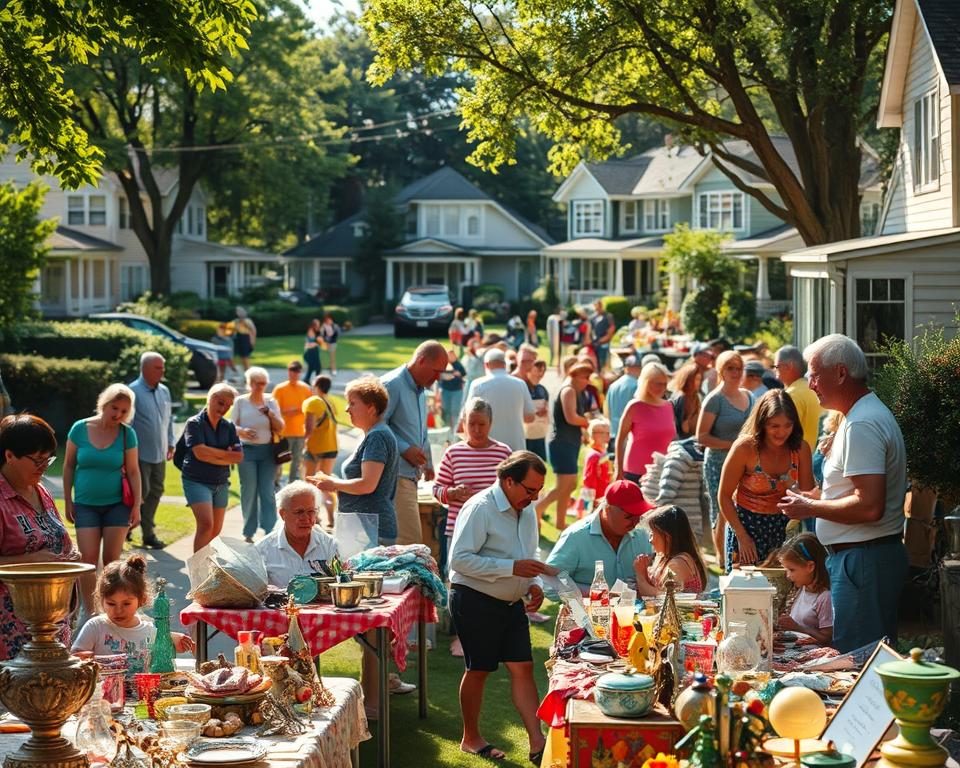
Ultimately, yard sales exemplify the essence of neighborly exchanges by combining the practical benefits of selling unwanted items with the social advantage of connecting with your community. So, the next time you think about organizing a sale, remember it’s not just about clearing out space—it’s about building stronger, friendlier neighborhoods.
Throw a Housewarming Party
Hosting neighbors for a housewarming party is a fantastic way to break the ice and create a welcoming environment in your new neighborhood. A well-planned gathering can set the tone for future community parties and foster long-lasting connections.
Planning the Event
Start by setting a date and sending out invitations well in advance. Make sure to include essential details like the start time and whether guests should bring anything. Deciding on a theme can add a fun element to the celebration. Consider simple themes like a barbecue, potluck, or game night, which can make it easier for everyone to participate and feel included. When planning your housewarming party, remember to keep your hosting neighbors in mind, ensuring that the event is comfortable for them.
Whom to Invite
Inviting a diverse group of people, from new neighbors to those who have lived in the area longer, can help build a more inclusive community. Make sure to extend invitations to families, singles, and older residents alike. By doing so, you provide an opportunity for everyone to mingle and get to know each other. This inclusive approach not only adheres to housewarming tips but also promotes stronger community ties and makes future community parties even more enjoyable for everyone involved.
Embrace Small Talk
Small talk is a crucial aspect of building relationships with your neighbors. It serves as the gateway to deeper conversations and lasting connections. By mastering some effective conversation starters, you can make introducing yourself and engaging neighbors a seamless experience.
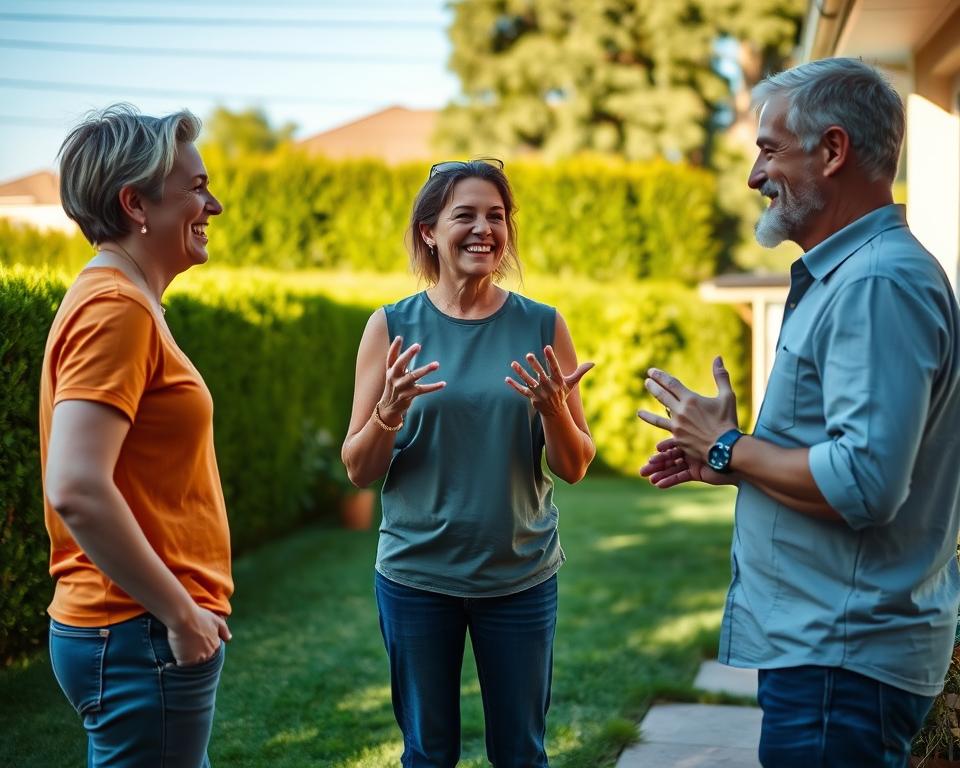
Topics to Discuss
When initiating small talk, consider discussing topics that are universally relatable and interesting. Here are a few ideas:
- Local amenities and businesses
- Community events and gatherings
- Recent news or developments around the neighborhood
Questions to Engage Neighbors
Asking thoughtful questions is a powerful way to foster a friendly dialogue and show genuine interest in your neighbors. Here are some questions that can facilitate engaging neighbors:
- “How long have you lived in the area?”
- “Do you have any recommendations for great local spots?”
- “Have you heard about the upcoming community event?”
By embracing small talk and using these conversation starters, you’ll find that forming bonds with your neighbors can be both enjoyable and rewarding.
Seek Out Neighbors with Similar Interests
Forming connections with neighbors can be significantly easier when you discover shared hobbies. By identifying mutual interests, you can foster deeper relationships and enhance the sense of community bonding.
Listen and Share
Engaging in conversations and listening actively helps in discovering common ground. Share your own interests and ask about theirs, which might uncover shared hobbies and lay the foundation for strong community bonding. Consider organizing small group activities that cater to these interests, further solidifying these newfound connections.
Using Social Media Apps
Social media platforms are excellent tools for connecting with like-minded individuals within your neighborhood groups. Utilize apps like Nextdoor or Facebook to join neighborhood groups where you can discuss common interests, organize events, or partake in shared activities. These online interactions often translate into meaningful, real-world friendships, further strengthening the fabric of the community.
Make Friend with Neighbor
Establishing a neighborhood friendship can significantly enhance your living experience. When you actively connect with neighbors, you contribute to building relations that create a more enjoyable and supportive environment. Regular communication, shared activities, and mutual support are essential elements to make this happen.
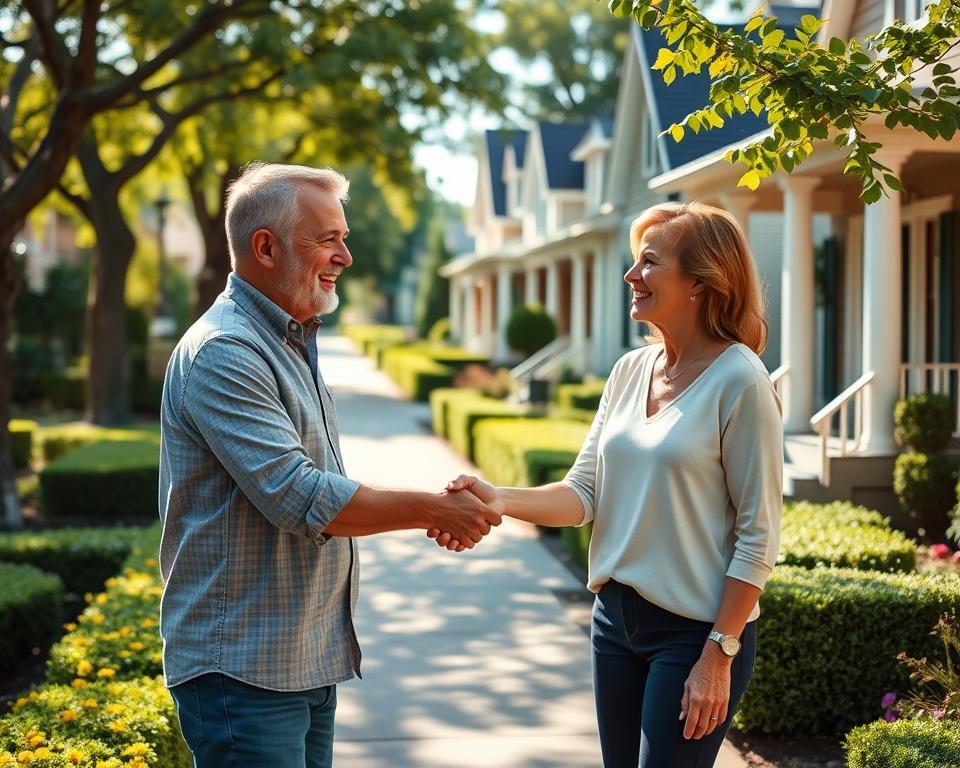
One of the most effective ways to establish neighborhood friendship is by making small gestures. Start by greeting your neighbors and engaging in light conversations. This simple act of reaching out can lay the groundwork for deeper connections. Organize neighborhood gatherings or participate in local events to know your neighbors better.
Here are some ideas to foster connections and build relationships with your neighbors:
- Host a barbecue or potluck: Invite neighbors over for a casual get-together.
- Participate in community clean-ups: Join hands in keeping your neighborhood tidy.
- Offer help: Assisting with small tasks can go a long way in building trust.
The more you connect with neighbors, the easier it becomes to foster a sense of community. A friendly wave or a genuine conversation can be the beginning of lasting friendships that enhance the quality of life for everyone in the neighborhood. By taking steps to actively build relations, you contribute to a more vibrant and cohesive community.
| Activity | Benefit |
|---|---|
| Hosting Barbecues | Builds personal connections and fosters a sense of community. |
| Participating in Clean-Ups | Enhances the neighborhood and provides opportunities to meet neighbors. |
| Offering Help | Demonstrates goodwill and fosters trust with neighbors. |
Be a Good Neighbor
Being a good neighbor involves maintaining community respect by acknowledging those around you and abiding by established guidelines. Implementing simple practices such as waving hello, joining local events, and adhering to community rules can cultivate a harmonious neighborhood environment.
Everyday Acts of Kindness
Small, thoughtful gestures go a long way in fostering good neighbor policies. Whether you’re lending a tool, picking up mail, or simply offering a friendly smile, these everyday acts of kindness demonstrate your commitment to neighborhood etiquette and community respect.
Follow Community Guidelines
Respecting and following community guidelines is essential in maintaining order and peace. Familiarize yourself with local rules, such as noise ordinances and trash collection schedules. Adherence to these policies reflects well on your character and encourages a culture of mutual respect in your neighborhood.
| Good Neighbor Practices | Benefits |
|---|---|
| Greeting Neighbors | Builds relationships and fosters community respect |
| Offering Help | Promotes positive interactions and neighborhood etiquette |
| Following Guidelines | Maintains order and encourages compliance with good neighbor policies |
| Participating in Events | Strengthens community bonds and encourages engagement |
Conclusion
Cultivating relationships with neighbors is essential for building thriving communities. Reaching out with simple gestures and small conversations can transform daily interactions into meaningful connections. These connections not only foster a sense of belonging but also contribute to the safety and well-being of everyone in the neighborhood. By consistently making an effort to connect, communicate, and engage, we can enrich our lives and those of our neighbors.
Embracing neighborly love brings numerous practical benefits. Whether it’s through answering the doorbell, joining local social media groups, or planning neighborhood events, every small step aids in creating a cohesive and supportive community. Engaging actively with those around us ensures our environment is friendly and welcoming, enhancing our overall quality of life.
In conclusion, dedicated community engagement leads to long-lasting and rewarding friendships. By valuing and nurturing the relationships with those who live around us, we turn our neighborhood into a place where everyone feels valued and supported. Let’s continue these efforts to ensure our communities thrive with robust relationships founded on mutual respect and neighborly love.



